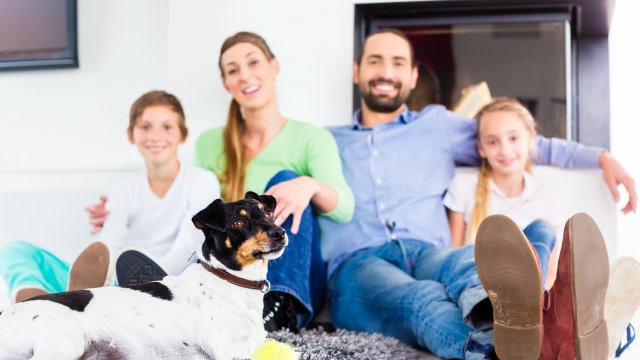Help Prepare Your Dog for Changes in Routine as You Return to Work and School
More family time at home can be a joy for humans and pups alike: it means more pets, more playtime, and more attention and activities throughout the day with our four-legged friends. Unfortunately, negative behaviors can quickly surface if we humans abruptly leave our dogs alone or crated more often as we return to our normal routines. A little preparation, however, can avoid or mitigate potential issues and keep the good vibes going when your schedule shifts.
Separation Anxiety
Dogs are creatures of habit – if their humans are around the house more regularly, they become conditioned to expect our presence. When kids return to school and adults return to work, pups do not understand why they are being left alone more often. The ensuing confusion may manifest itself in Separation Anxiety, a complex behavioral issue.
What Does Separation Anxiety Look Like?
There are several indicators of Separation Anxiety, including:
- Vocalization (excessive howling and barking)
- Inappropriate toileting
- Destructive behavior (like chewing and digging)
- Excessive panting, pacing and drooling
- Overexcitement when family members return home
Separation Anxiety cases range from mild to severe, but even minor ones can have a negative effect on your dog’s well-being
How Can We Avoid It?
You don’t need to be away from home to reacclimate your dog to alone time – you can practice separation while still around the house today! This simple, effective method teaches pups to be comfortable being left alone. Introducing the following exercises at least a week before schedules shift (more time is always better!) can quickly return dogs to normal:
- Set specific pet and play times each day. If you are working from home, “leave” for work (isolate yourself from your dog) and only interact with your dog during “breaks.”
- Do not allow your dog to follow you through the house.
- Teach your dog to be comfortable some distance away from you or in their own space – perhaps in another room, or in their crate for short periods of time throughout the day, even when you don’t need them to be.
- Practice leaving the house – casually gather your things and exit, then come back in without making a big fuss.
- Start with short periods of time apart, then gradually work up to your dog being alone for roughly the same amount of time you will be gone when things return to normal.
- Webcams or baby monitors can be helpful tools to observe your dog’s behavior while separated.
If you practice these exercises, you can ensure that your pup is comfortable, well-loved… and not glued to your hip.
Avoiding Boredom
Dogs love to be entertained – who doesn’t? – and you will not always be there to amuse them. Boredom can lead to destructive behavior, but it doesn’t take much to engage your dog, even while you are away.
- Scatter food: Dogs are natural foragers who love to look for food on the ground (and will literally spend hours doing so, given the chance). You can even try hiding some treats for your dog to locate – just don’t forget to provide lots of fresh, clean water to keep your dog well-hydrated.
- Toys: Dogs love toys, but lower-quality options are easily destroyed (or quickly become boring). First, buy high-quality, virtually indestructible toys that your dog will always enjoy – ones that hold treats are great options. Second, rotate the toys every few days to hold your dog’s interest with something new and fun. Make sure you monitor your dog initially when playing with any new toy.
Provide Shelter
Your dog needs a “home” at home – a special space to call their own.
- Crates are excellent choices but require some initial training – ideally, begin a week before any extended absences. Make sure to call a friend to let your pup out to toilet if you will be gone longer than 8-10 hours (for a full-grown dog) and 4-6 hours (for a puppy).
- Laundry rooms (or similarly enclosed spaces) can be great options if you are concerned about potty training – tile or vinyl floors are easier to clean, and smaller spaces inhibit the tendency to toilet. Make sure to add soft bedding and toys.
Manage Excitement
Stress, excitement, and pent-up energy mean dogs may overreact to normal situations, like family members returning home after school or work. Advance training can help kids, adults, and dogs alike manage their enthusiasm and avoid mishaps.
- Family members should avoid going directly to your dog’s area when you arrive home. Wait until your dog settles down and is not seeking attention before greeting him.
- Make sure children are supervised by adults to reduce the risk of any problems.
Questions or Advice? We Can Help!
Effective communication – delivered in a language dogs understand – is the secret to happy pet owners and equally pleased pups. Bark Busters trainers are just a call away to answer your questions, offer support in person or via video conference tools, and provide advice on any issue – so you can live a happier life together with your dog!
